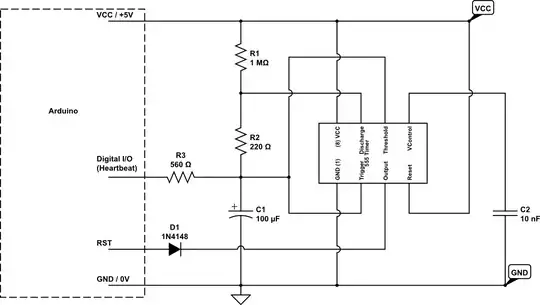It's called a "Wired Or" arrangement.
The Arduino's RESET pin has a pullup resistor in it (10KΩ). That keeps the RESET pin normally HIGH. To invoke a reset that pin needs pulling low, and that is done from a number of sources:
- The RESET button
- The DTR pin (through a 100nF capacitor) of the USB interface chip
- The 555 watchdog circuit above
The critical one there is the DTR pin. That, because it's a brief pulse with quite a high output impedance, needs the reset pin to be easy to pull down. If you connected the output of the 555 directly to RESET it would be constantly trying to pull the RESET pin up to 5V with quite a low output impedance. The DTR circuit would have no chance of overcoming it.
So by adding a diode in there you get Wired Or, using an arrangement direct from the 1950s - DRL - Diode-Resistor Logic. When the output of the 555 is HIGH the diode is reverse biased (or neutrally biased) and doesn't conduct, so the RESET pin's own resistor pulls the RESET pin up. However, when the output of the 555 is LOW the diode can then conduct (it's forward biased) and that pulls the RESET pin LOW.
